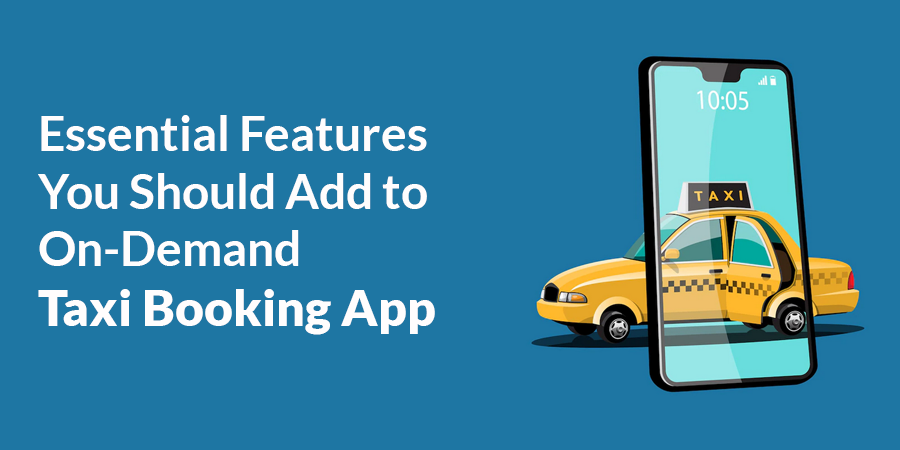Gone are the days when you have to hail taxis with your hand. Previously it wasn’t very pleasant to be waiting for a cab for such a long time. But thanks to new technologies and advancements, boarding a cab is no longer a hassle as smartphones have eased businesses by developing on-demand taxi booking apps for easy transportation.
Taxi booking apps have made transportation hassle-free because they allow you to book a cab in minutes. You can book your ride from taxis like Ola and Uber-like taxi caps across the huge occupied urban communities of the world. Not just a taxi booking application gives you a significant personal ride insight. However, it is a profitable and decent business model as well.
For the past few years, the taxi booking industry has been bound on an upward growth trajectory. Studies show that the value of the taxi booking application market was around $ 36,000 million, and it is expected to grow more in 2017 and is expected to grow more at a compound annual growth rate of 16.5% till 2025.
This massive growth of online taxi booking has seen many youthful business visionaries enter this business and start taxi booking app projects. To help such entrepreneurs to build their own taxi booking apps, we have spent many hours analyzing the functionality and business model of the most successful online cab aggregators. In this post, we will introduce some essential features that every business owner must have in their taxi booking app.
A Quick Overview of On-Demand Taxi Booking App
A cab booking or taxi booking app is a smartphone application that enables passengers to book an online taxi with the help of an internet connection. Before prototyping the on-demand taxi booking app, you need to know the significant elements and features that you must integrate into the taxi booking application.
Two applications need to be developed for a successful taxi booking service. The first application is for a driver app, and the second one is for a passenger application. Taxi booking applications like Ola and Uber like apps also have a similar interface that allows passengers to experience an easy carpooling experience.
Passenger App
A passenger app is used by customers who download the taxi booking app to book a cab or ride. Customers sign up for this app and use it for booking online taxis. Users can easily book a ride with the passenger app, including the live taxi booking status, geolocation, driver’s information, in-app chat with the driver, ride-sharing button, digital payment options, etc.
Driver App
A driver app is for booking companies’ drivers as the app helps them accept or reject the ride request sent by the passengers through the customer application. The driver application also comes with essential features like the passenger app, including driver profile update, driver rating, riding history, earning history, etc.
Essential Features You Must Have in Your On-Demand Taxi Booking App
The on-demand concept has revamped the industry functions, as organizations now use their digital presence to provide secure services and high-tech applications to their customers. On-demand taxi apps are one of the best examples of this, as many people seek to develop an app like Uber. If you, too, are planning to build an app like Uber, then make sure to have the following features embedded in your application. Here are some of the best features to include:
1. Maps & Location
This is the must-have feature in the taxi booking app as users must get the cab drivers to fetch their exact location to board a taxi. When your smartphone goes down, the power of GPS tracking and Google maps can be used to get customers’ location no matter where they are.
Without maps and places featured in the taxi app, a taxi driver may need countless directions with the passenger by phone, which later leads to the customer’s frustration. If it happens, it might not be suitable for your taxi business because passengers’ frustration will lead to a bad experience and ratings. Google maps can help drivers navigate all roads and lanes without outside support to reach the passenger spot.
2. Choose Ride Type/Vehicle
The next feature you can add to your on-demand taxi booking application is the choice of vehicle/ride. With this feature, the passenger will have the authority to choose their vehicle at their convenience. Many renowned taxi booking apps have these unique features and allow riders to choose from the available list of cars such as a sedan, SUVs, bikes, autos, etc. Depending on the need and customer’s requirements, they will choose the vehicle of their choice and move ahead with the vehicle of their choice.
3. Contact Channel
By building a contact channel in an on-demand taxi app, you can send notifications to customers about various offers and deals that your taxi booking app is rolling out to attract customers. With this feature, you’ll be able to send push notifications or pick in-app updates to your customers to help them stay updated with the new modifications in-app.
Moreover, it can also be applied to passengers, where vital information or policy changes can be transmitted through in-app alerts. Letting your customers update is another best way to glue them with your taxi app business.
4. In-App Payments
In-application feature is another prominent feature that you can include to build the best taxi on-demand app for your business. A critical feature that a renowned app like Uber also uses is quite successful in customers because it makes the payment process realistic and smooth.
When you need a professional taxi app solution like Uber, you must use a fully compliant payment gateway. Integrated payment systems help passengers automate the payment process. At the same time, technology integration leads to further sophistication and leads to a better customer experience.
5. Intelligent Analytics System
Get numbers, analyze them every day or month, and improve your business to monitor how your taxi booking app business is working. With well-presented reports and complete details of your company, you can see where you need improvement and where it is doing well.
Integrating an analytics system will help you track daily requests, reservation sources, and issued versus missing requests to help streamline your taxi app booking system. It would help if you made sure to take only data-backed decisions by leveraging the proper analytics systems for your on-demand taxi booking application.
6. In-Built Fare Collection
Drivers need to make the payment without the need for physical cash deposition. The best way to enable this is to ask the taxi drivers to sign up for a contract and then pick a billing period. There is no need for manual documentation. Your taxi app needs to integrate a payment mechanism that allows the drivers to pay you from their collection help while eliminating the needless human contact between drivers and administration for collection fees.
7. Review & Ratings
Review and rating on your on-demand taxi application are highly prominent for helping the drivers to get their deserved feedback and rating from the passengers. Drivers also give reviews to their customers based on their behavior during the ride. There is an entire history of ride-sharing on taxi booking apps that helps drivers and customers know each other via in-app feedback and ratings.
Conclusion
All those business owners looking to build a successful on-demand taxi booking app can blend all the above-mentioned critical features into their application. Moreover, you could implement an array of other substantial functions to add value to your mobile apps. You need to remember one thing: building a scalable application is not accessible if you do not have a roadmap, to begin with.
Therefore, hiring a professional taxi app developer is the best choice. You can connect to the best mobile app development company and have words with their mobile app experts to discuss the scope of your project and required functionality to ensure getting the best out of your business idea.





